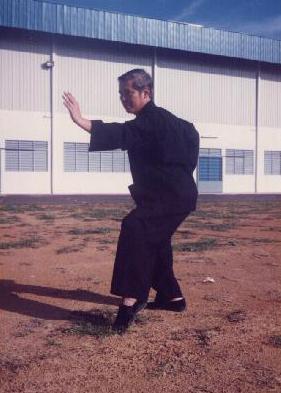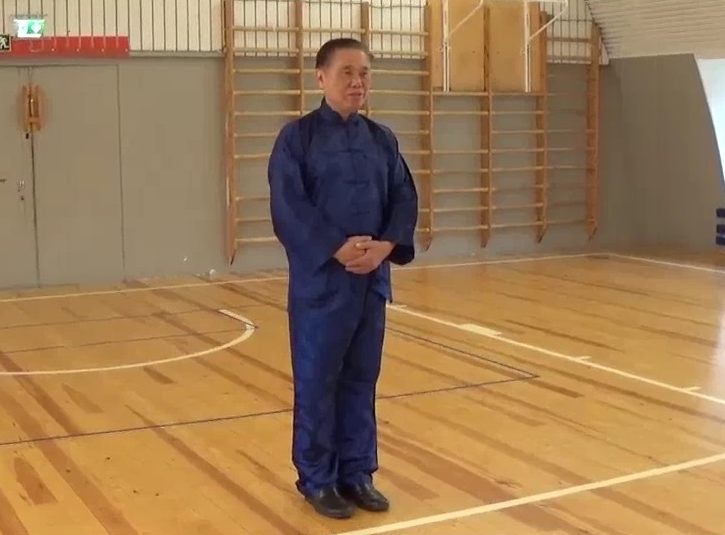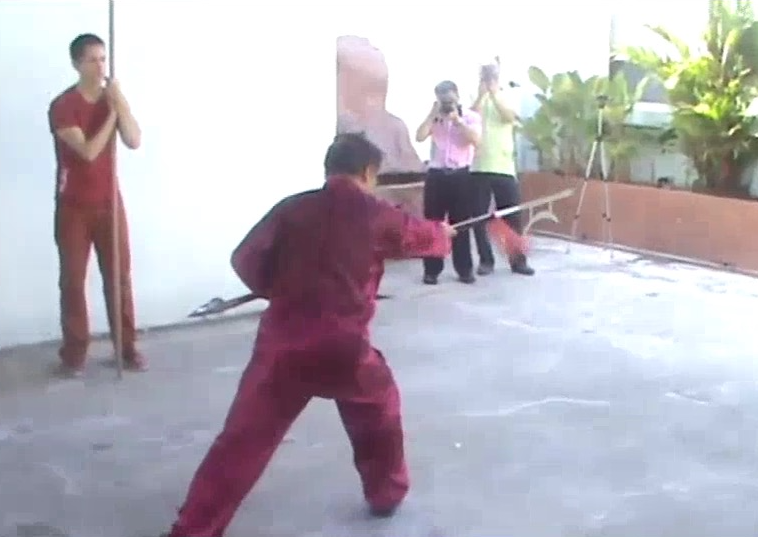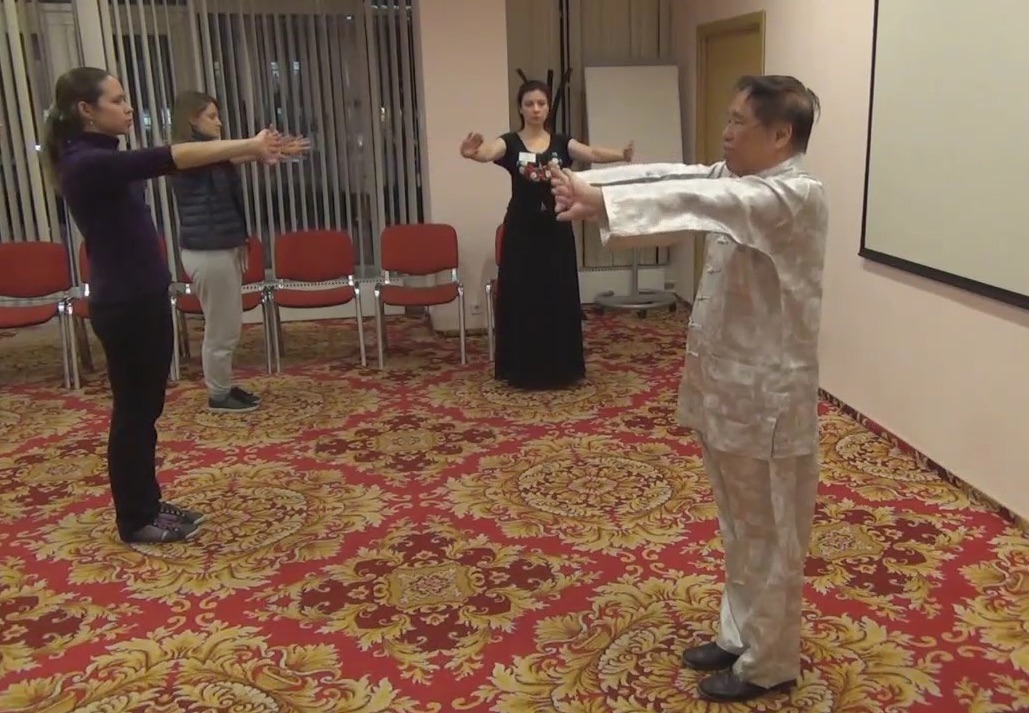SELECTION OF QUESTIONS AND ANSWERS
MAY 2019 PART 2

Routine-form-force and Flow is a good approach in learning a kungfu set
Question 1
You have mentioned the four stages of practicing a kungfu set, which are the routine of the set, picture-perfect forms of all the patterns in the set, applying internal force in the patterns, and making the patterns flow smoothly. Did the Shaolin monks at the Shaolin Monastery use these four stages of practicing any kungfu set?
— John, Ireland
Answer
No, the Shaolin monks in the past did not use this method. When I learned from my sifu, Sifu Ho Fatt Nam, who inherited the method from the Shaolin monks, he also did not use this method. This method was evolved from my many years of teaching.
The method did not come all at once; it evolved gradually. Firstly, we have to learn the routine of the set. This is what most kungfu practitioners do. Unfortunately most of them only do this. They start learning kungfu sets, and continue learning kungfu sets throughout their kungfu career.
In our school I paid much attention to picture-perfect form, which Sifu Ho Fatt Nam and Uncle Righteousness emphasized. You may notice that when I teach chi kung, I do not pay so much attention to form. The main idea is to get the students to have an energy flow. But in kungfu, form is important. If the kungfu form is not picture-perfect, it will not have the advantages of combat.
I noticed that in my courses, kungfu students had little force. Some of them merely performed the form. So I taught them how to employ force in their patterns. Later I found that students might have force, but their kungfu patterns did not flow smoothly. So I introduced flow.
Over many years we evolved a system whereby students could perform a kungfu set in its correct routine with picture-perfect form, good force and smooth flow. I discovered that when students focused on the flow of their patterns, they often neglected their force and form. So I introduced the concept of "progressing without retrogressing". Students could perform patterns in a set in a flowing manner without neglecting their force and form, and following with the routine of the set.
We call this progression of learning the routine, picture-perfect form, force and flow of a kungfu set the force method. It was the initial method I used when teaching a kungfu set, and was specially useful in Shaolin Kungfu. When I taught Taijiquan, the emphasis was on flow. So gradually we developed the flow method, which is learning the routine of the set, making the form picture-perfect, focusing on the flow of the patterns, and when the flow is very smooth we attain force.
So we have two different approaches in learning a kungfu set, the force method and the flow method. These two terms -- the force method and the flow method -- were coined by me for the convenience of our students. Basically in the force method the progression is routine, form, force and flow. In the flow method the progression is routine, form, flow and force.
I tried out the flow method in the Iron Wire set in Ireland and Spain. The orthodox way of Iron Wire training is the force method. But surprisingly, we found the flow method very effective. In Barcelona in Spain, all the course participants in an Iron Wire course found that they developed more internal force using the flow method than using the force method.
Like many things we learn in our kungfu classes, the force method and the flow method are not only very useful in kungfu. They can be profitably transferred to our daily life. The force method, for example, is effective when a manager gives instructions to his staff, and the flow method is effective when performing any daily tasks.
Question 2
What is good chi and what is bad chi?
— Racheli, Ireland
Answer
Good chi is energy that is beneficial to us, and bad chi is energy that is harmful.
Fresh air when we go up a hill and gentle exercise which generates good energy are beneficial to us. These are good chi.
Blockages inside our bodies and stale air, which some people emit when they perform chi kung, are harmful. They are regarded as bad chi.
Bad chi, in its wide sense, includes viruses and bad cells in our bodies, as they are actually forms of energy harmful to us.
In the past, one of the names for chi kung was "exchange of bad chi for good chi". Chi kung practitioners breathed out bad chi and took in good chi when they practiced chi kung.
It is worthwhile to notice that what is good or bad for us may not be necessarily be good or bad for other beings. For example, going underground is bad as we find the air stuffy. But other creatures like snakes and insects find the air good.

In the past, chi kung was known as "Exchange of Bad Energy for Good Energy"
Question 3
Some of the answers you give in the Question-Answer Series are about questions asked a year ago. Are the answers out of date?
— Matthews, USA
Answer
No, the answers are not out of date. The answers are as interesting and helpful irrespective of when they are posted. If the questions are topical, or limited by time, I arrange for them to be posted earlier.
I have a long waiting list of interesting questions and answers extending more than one year. But I reply to the inquirers immediately when the answers are ready. In other words, although the answers to some of the questions may appear months later, the inquirers get the answers immediately.
Question 4
What is the difference between the Crescent Moon Spear and the double Crescent Moon Spear (left and right crescent moon to the spearhead) in terms of combat? Can you give an example which one would be better in a specific (combat) situation?
— Dimitri, Austria
Answer
The Crescent Moon Spear is a spear with a crescent moon attached. It is a long weapon, i.e. the spear with the crescent moon is attached to a long handle, together about seven or eight feet. It would be longer when a warrior used this weapon on horseback. Lu Bu, considered the best warrior of the Three-Kingdom Period (about 220 to 280 CE) of Chinese warring history, used the Crescent Moon Spear so well that this weapon is sometimes called the Lu Bu spear named after him.
Sometimes the spear has two crescent moons attached to each side of the spearhead. It is usually a short weapon, usually less than 3 feet with the handle. Xu Chu, who had tremendous strength and was a general of the warlord Cao Cao of the Three-Kingdom Period, was an expert using this pair of weapons.
The crescent moon or two crescent moons attached to the spear are used to backslash an opponent, or to capture an opponent's weapon. However, if the opponent is far away, it is easier to turn the hands holding the handle. Hence, in horseback fighting when an opponent was far away, the Lu Bu spear with only one crescent moon was used, but if the opponent was near, two crescent moons were used.

The crescent-moon-spear has a crescent moon attached to a spear
Question 5
Is the Plum Flower Sabre the same as a Dadao? Specially in combat application, what makes the difference between those two?
Answer
The Plum Flower Sabre is a single sabre, whereas the Dadao, which means "Big Knife", is a blade attached to a long handle. The single sabre is a short weapon whereas the Dadao is a long weapon. Only one hand is used for a single sabre, whereas two hands are used to hold a Dadao.
The single sabre may be used in pair, especially in northern styles kungfu. The Plum Flower Sabre is a famous set of the single sabre. There are many different versions of this set.
Besides the Plum Flower Sabre I also have learned a pair of double sabres from a northern style kungfu. When I asked the master who taught me this double sabres, he said there was no special name for the set.
There are different types of Dadao, like Guan Dao, Nine-Ring Dadao, Chop-Horse Dadao and Bar-the-Gate Dadao. Guan Dao is named after the famous warrior of the Three-Kingdom Period, Guan Yu. It is sometimes called Green Dragon Crescent Moon Knife.
Question 6
When we smile from the heart, do we become happy first or we smile from the heart first?
— Frank, Germany
Answer
You should not worry about such trifle questions. Does it really matter whether you become happy first or you smile from the heart first?
The problem is not the questions, but your attitude, which happens to be very common with most people today especially in the West. People intellectualize unnecessarily, with the result that they become stressful.
They have questions, which are actually not important, coming to their mind all the time. They find that they cannot free their mind from these questions. In other words, they do not have mental clarity even when they can be otherwise very intelligent. They are crowded by unnecessarily thoughts.
You will find life easier and happier by freeing your mind of unnecessary thoughts. An excellent way is to practice our chi kung or kungfu. When you practice chi kung or kungfu, you have to enter into a chi kung state of mind, or to enter Zen, which is freeing your mind of all thoughts.
Nevertheless, I shall still answer your question. You smile form your heart first, then you become happy. Smiling from your heart opens your heart. When your heart is open, you will be happy.
Why does smiling from the heart open the heart? It is the nature of things. It happens spontaneously, though not many people know it.
Here, we know something that has puzzled many philosophers and scientists for centuries. What make people happy?
Irrespective of whether one is a pauper or a king, irrespective of whether he lives in a deserted island or a crowded city, when he smiles from the heart, his heart opens, and he will be happy.
Being happy differs from persons to persons. Many people will be happy when they have a lot of money. But if you give a lot of money to a child or a priest, he may not be happy. A child is happy when he plays with his toys, and a priest is happy when many people follow his religious teaching. They are happy because their heart opens. When you smile from the heart, your heart will naturally open.

"Separating Water" of Eighteen Lohan Hands
Question 7
A writer mentioned that Zhongli Quan invented Eighteen Lohan Hands. What is your opinion of this statement?
Answer
That writer is wrong. Eighteen Lohan Hands were invented by Bodhidharma, who is regarded as the First Patriarch of the Shaolin arts.
Zhongli Quan is a Taoist immortal. Because he lived as a person in the Han Dynasty, many hundreds of years before Bodhidaharma, he is often called Han Zhongli. He was a general in his personal life.
When he has become an Immortal, he is generally depicted as a chubby man with a big, round stomach, usually carrying a fan.
Question 8
Which do you think is better, Cosmos Palm or Cotton Palm?
Answer
Both arts are wonderful. But if I have to make a choice, I would think Cosmos Palm is better. This of course does not make Cotton Palm inferior. Many other people may think Cotton Palm better than Cosmos Palm.
I prefer Cosmos Palm to Cotton Palm because I was trained in Cosmos Palm. In its training, there are both following force and consolidated force. In Cotton Palm there is only flowing force. As mentioned earlier, this does not make Cotton Palm less effective.
It is very difficult even for masters to learn any one of these arts. It is indeed incredible that both arts are found in our school.
If you have any questions, please e-mail them to Grandmaster Wong via his Secretary at secretary@shaolin.org stating your name, country and e-mail address.
LINKS
Selected Reading
- Force Method, Flow Method and Important Discoveries
- Is Shaolin Kungfu to Flowery for Combat?
- Taiji Dance and Genuine Taijiquan
- A Very Special Course, A Very Special Master
- Please Blow your Horn
